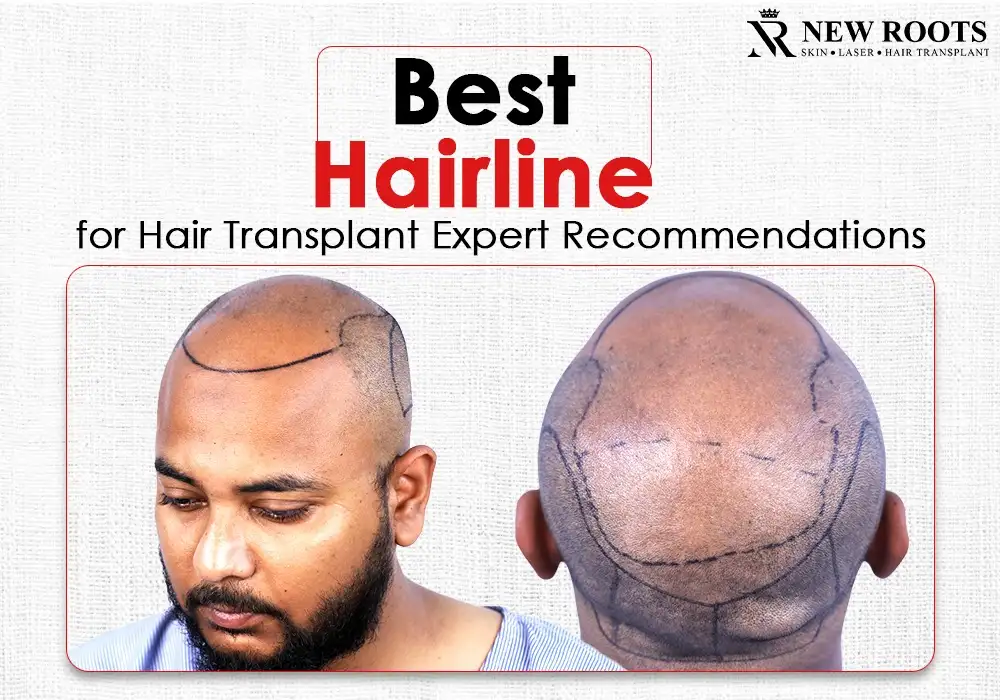Best Hairline for Hair Transplant: Achieve Natural-Looking Results
Hair is one of a person’s most essential characteristics, including long hair, baldness, and short hair. The best hairline for hair transplant is the most important option for a person seeking more permanent treatment.
Hormonal problems, such as thyroid problems, cause hair loss. The hairline is important for hair transplantation. In this Article, we delve into the world of hairline transplantation. Let us explore the best hairline for hair transplant, the technique, the benefits, and the journey to getting the perfect hairline.
Best Hairline Design for Hair Transplant:
The best hairline for hair transplant design combines factors and principles. The hairline makes the hair transplant look natural and authentic. The hairline is designed to make a harmonious appearance and natural look, as well as the shape of the face, the facial features, and the overall aesthetic appeal.
Importance of Hairline Design:
The hairline is the most essential part of the hair transplant. When you look at yourself in the mirror, the hairline and the section are noticeable. Proper design is crucial to getting natural-looking results.
The facial structure and hair growth pattern reflect the hairline of the individual’s age. The hairline is designed poorly, which can lead to an unnatural appearance and look like an artificial hair transplant. The best hairline for hair transplant design can create a natural-looking hair transplant. The natural hairline is to understand the principles of the hairline.
Principles of Hairline Design:
The principle of hairline design involves various factors, including the shape of the face, the rule of thirds, and the frontalis. The best Hairline for hair transplant design for the shape of the face is very important. The hairline should fix the face’s shape while considering facial traits. The rule of thirds divides the face horizontally and vertically, with the hairline located at the centre of these lines.
What types of Hairline Designs:
Several hairline designs are used in hair transplantation. The best hairline for hair transplantation is natural, square, or v-shaped. The square hairline is flat and straight. The v-shaped hairline is an essential angle between the forehead and the hairline. The natural hairline is naturally high up the forehead, with or without hair loss, taking into account the shape of the face and the facial features of the natural hairline individual.
The significance of an extended hairline:
The transition zone, defined zone, and frontal tuft area are all important parts of the extended hairline region. This region is vital for creating a natural-looking hairline because it generates a variety of follicular units that contribute to initial density and a more defined pattern.
Conclusion:
The best hairline depends on the person’s hair growth pattern, facial features, and age, which is essential to getting natural and pleasing results. The best hairline for hair transplants makes the patient’s hair look natural and real, using the rule of thirds, the frontalis muscle, and the shape of the face.
The best hairline for hair transplant design combines these principles and factors. The patient’s hair transplant looks natural and realistic with the rule of thirds, the frontalis muscle, and the shape of the face.
FAQ:
The golden ratio is used to create a balanced and natural-looking hairline. During hair transplant surgery, it is vital to determine the front hairline. The golden ratio principle reflects the face’s upper part to the hairline’s lower part.
The golden ratio is the term used to describe the proportion between a temple’s width and its distance from another temple. Each hair follicle is carefully determined using an algorithm. The face features match the golden ratio (1:1.618).




